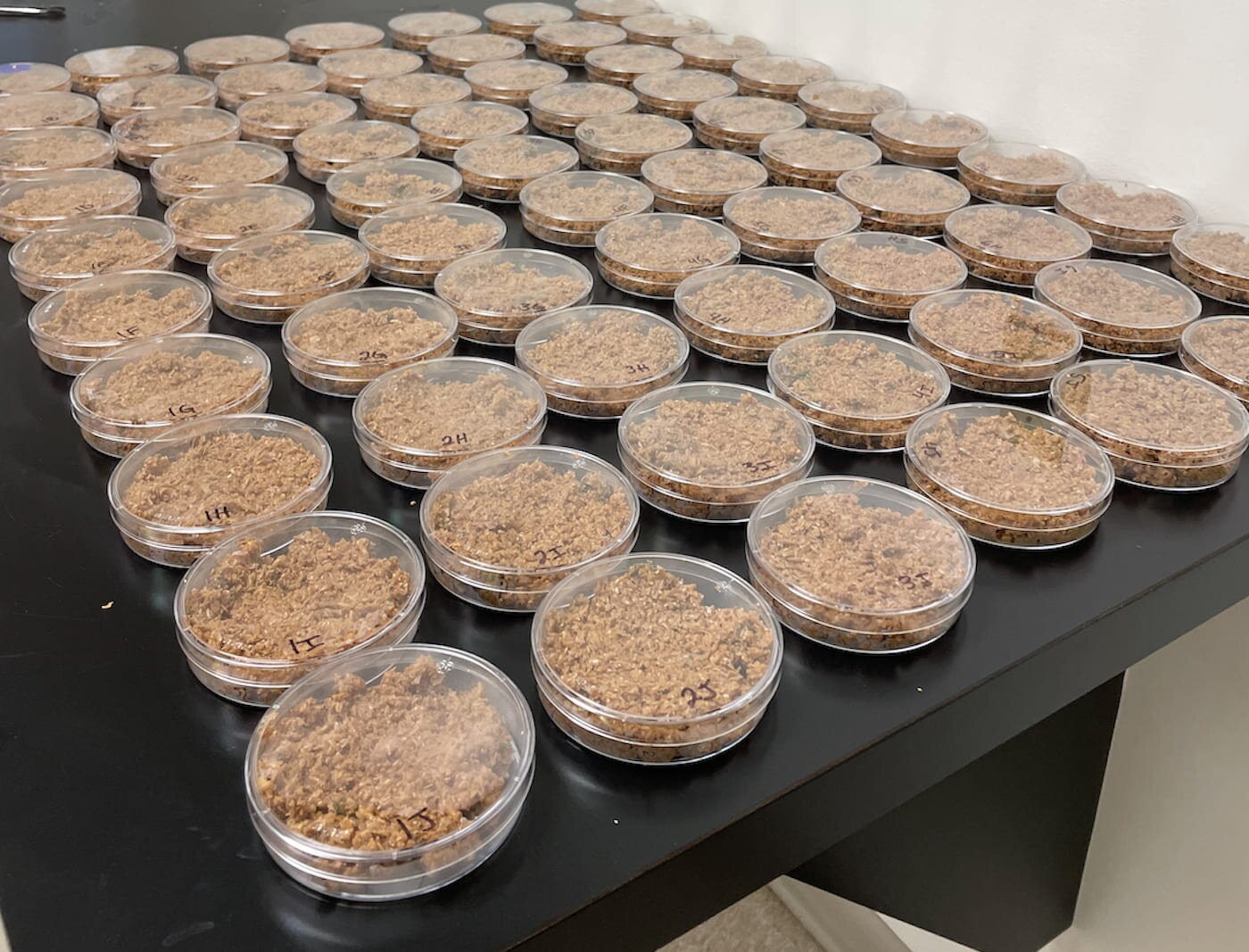Arkansas researchers are testing a product generally used to deal with ticks and fleas on pets to focus on fly and mosquito larvae with the aim of serving to cut back the unfold of ailments carried by these bugs.
After switching to fluralaner as a veterinary remedy for her canine, Emily McDermott, assistant professor of medical and veterinary entomology and a researcher for the Arkansas Agricultural Experiment Station, was interested by exploring different attainable functions for it.
“The explanation I put my canine on this fluralaner drug is as a result of the spot-on remedies weren’t working very properly,” she mentioned. “Fluralaner is thrilling as a result of it has a special mode of motion than present pesticides.”
The drug prevents bugs’ nerve cells from working correctly, disrupting their nervous programs.
McDermott says earlier research had proven promising outcomes when fluralaner was utilized as a sprig, however that it is rather more efficient if ingested orally. She and Ph.D. scholar Blythe Lawson carried out analysis to search out out if fluralaner could be efficient as a larvicide and the very best technique to feed it to the larvae.
By treating larvae immediately, they had been in a position to make use of fewer chemical substances and goal particular areas the place larvae are concentrated, decreasing the necessity for widespread spraying and minimizing the chance of contaminating waterways and the atmosphere.
Their examine titled “Profitable yeast microencapsulation of fluralaner and its potential as a larvicide for vector management,” is revealed within the Acta Tropica journal.
“Fluralaner is an up-and-coming artificial chemical, and there is a whole lot of curiosity in increasing its use,” Lawson mentioned. “There is a large want for larvicides out there; there are only some for mosquitoes.”
Flies and mosquitoes can carry ailments akin to malaria, dengue and Zika virus. McDermott says illness vectors akin to mosquitoes and flies have developed resistance to generally used medicine and conventional strategies typically goal grownup bugs. Nevertheless, Lawson and McDermott investigated methods to make use of fluralaner to focus on these insect’s larvae earlier than they turn into adults, which is when they’re most certainly to unfold ailments or develop into pests.
“You’ll be able to knock these populations down earlier than they begin inflicting issues,” McDermott mentioned.
Fluralaner is offered in chewable type for pets beneath the model identify Bravecto, at present the one labeled type of fluralaner in america.
The Computer virus technique
McDermott and Lawson used a yeast microencapsulation method to research if fluralaner would work. They encapsulated yeast cells with the insecticide after which examined it on larvae of three species:
- Frequent home fly (Musca domestica)
- Asian tiger mosquito (Aedes albopictus)
- Biting midge (Culicoides sonorensis), the commonest midge in a lot of the japanese U.S.
McDermott and Lawson mentioned the larvae of those species naturally eat microorganisms akin to yeast, making the microencapsulation a really perfect supply technique.
“It acts like a Computer virus,” Lawson mentioned.
Their analysis confirmed that fluralaner is efficient and long-lasting as a larvicide. The examine discovered {that a} single software of microencapsulated fluralaner might management mosquito larvae for 5 weeks and midge larvae for eight weeks.
“We in contrast our product to a few commercially out there mosquito larvicides, and we discovered that it was as efficient or simpler than the merchandise which might be at present in the marketplace,” McDermott mentioned.
The examine additionally discovered {that a} increased focus is required to kill off housefly larvae in comparison with mosquitoes or biting midges, which McDermott says was not shocking provided that houseflies are bigger.
Nevertheless, McDermott mentioned the midges appeared to be much less delicate to the larvicide than mosquitoes, which was not anticipated as a result of the midge larvae are a lot smaller than the mosquito larvae.
“So, we do suppose there is a dimension part to this, but it surely’s not simply dimension—there’s one thing in regards to the physiology of the bugs as properly,” she mentioned.
Future use
McDermott envisions that this analysis will result in the event of a product that might be used round households and trash assortment websites, for instance.
“The best way our product is formulated is that after we encapsulate the energetic ingredient within the yeast, we freeze-dry it and get it again all the way down to a powdered yeast type,” she mentioned. “We envision this product might be in a backpack sprayer, and you’ll spray it like every other sort of insecticide.”
McDermott says her staff is participating with trade companions to maneuver ahead with this patent-pending know-how.
“We’re nonetheless a number of steps away from a business software,” she mentioned. “With additional testing and improvement, this yeast-based larvicide might present a brand new device for vector-control efforts and public well being.”
Extra info:
Blythe E. Lawson et al, Profitable yeast microencapsulation of fluralaner and its potential as a larvicide for vector management, Acta Tropica (2024). DOI: 10.1016/j.actatropica.2024.107358
Supplied by
College of Arkansas
Quotation:
From pets to pests: Researchers discover new device to combat disease-carrying bugs (2024, November 12)
retrieved 12 November 2024
from l14
This doc is topic to copyright. Aside from any honest dealing for the aim of personal examine or analysis, no
half could also be reproduced with out the written permission. The content material is offered for info functions solely.
